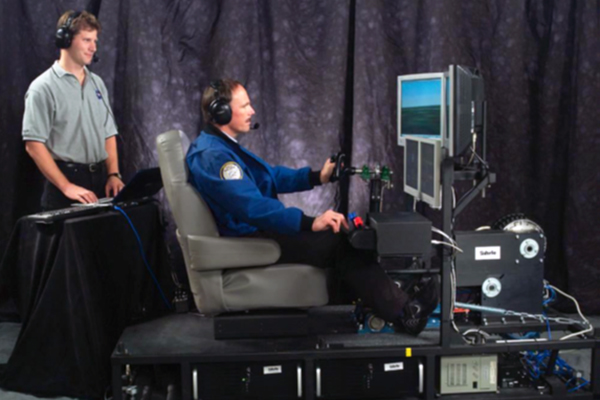UTSI Tackling Aircraft Icing Thanks to NASA Simulator Donation
Flying in the United States has become increasingly safe over the years. In fact, flying on an airliner on average is overwhelmingly safer than driving a car.
While technology has played an important part in increased safety, one of flight’s most persistent enemies occasionally rears its head as a dangerous, sometimes unpredictable foe: weather.
Icing, in particular, is a problem for which the Federal Aviation Administration and the National Transportation Safety Board routinely issue new guidelines and recommendations. Measures to prevent or remove ice from aircraft are far easier to execute on the ground than in the air.
The UT Space Institute has been working to improve icing safety since the early 2000s, with a recently donated flight simulator from NASA giving the training and research a boost.
“Specifically, we train pilots for the effects of icing on aircraft handling characteristics and stall characteristics due to wing and tailplane icing,” said Rich Ranaudo, who teaches the icing course with Borja Martos. “The combination of simulator training and technical classroom presentations by subject matter experts provides pilots and engineers with a comprehensive understanding and practical knowledge of how icing impacts aircraft performance and handling. Being able to simulate such conditions has an obvious and huge advantage over speculating or having to undergo such conditions in field testing.”
Martos provides both classroom and simulator instruction through his company, Flight Level Engineering, by request. The simulator training places a focus on dealing with these adverse conditions.
Since the course began under Ranaudo in 2004, it has been completed by more than 200 engineers, pilots, and government and academic leaders. Most attendees are pilots and engineers involved in development and certification of aircraft.
Martos joined Ranaudo more recently, having worked at UTSI for eight years and earning his doctorate in aerospace engineering from UT in 2014. The pair serve as instructors when demand for instruction reaches the point that a new session is warranted, typically about once a year.
They use a simulator, the Ice Contamination Effects Flight Training Device (ICEFTD) as part of the Icing Short Course, in addition to FLE’s unique aircraft, an in-flight simulator with five degrees of motion. Except for the Calspan Corporation, they are the only provider of these type of flight services in the United states.

Tom Ratvasky, an aerospace engineer at NASA’s Glenn Research Center in Cleveland, Ohio, helped make the gift possible.
“NASA’s icing research agenda had shifted into a different area, but we wanted to continue to use the ICEFTD,” Martos said. “Tom Ratvasky had been our contact at NASA, and he and Rich have known each other for a long time. So I called Tom and asked if NASA would donate the equipment to UTSI so that we could have broader access, teach short courses, and carry out research—and NASA said yes.”
Martos credited UTSI Director for Continuing Education Becky Stines with helping to make sure everything fell into place, and the current icing research took off, no pun intended.
Industry icons such as the Boeing Company, Embraer SA, Gulfstream Aerospace Corporation, Cessna Aircraft Company, and the Raytheon Company have sent employees to take the class, as have the FAA, the US Army, and the US Air Force.
Icing can occur in a variety of situations and can cause serious in-flight issues, impeding flight controls or even damaging the engines themselves. The ICEFTD simulator is the only known flight training device of its kind that allows pilots to experience true icing effects, because its capability was derived from actual flight testing and extensive wind tunnel tests.
Pilots are subjected to training flight profiles based on data and events gathered in actual flight, learning how to look for signs that icing might be impacting aircraft control. The training emphasizes recognizing handling problems and knowing how to react to them. Additional flight profiles are routinely used for nonpilots.
“The feedback we’ve gotten is overwhelmingly positive,” Martos said. “The simulator is the gold standard of piloted icing simulations. Certified full motion multimillion-dollar simulators that airlines use do not come close to the icing effects accuracy for both performance and handling of the ICEFTD.”
Getting familiar with how to respond to a variety of situations will help pilots reduce stress and confusion should such events occur to them in the real world, improving outcomes for all.
Contact
David Goddard (865-974-0683, david.goddard@utk.edu)
Interested parties can contact Borja Martos at borja.martos@gmail.com for additional information on the ICEFTD, training courses, variable stability flights, and research opportunities.